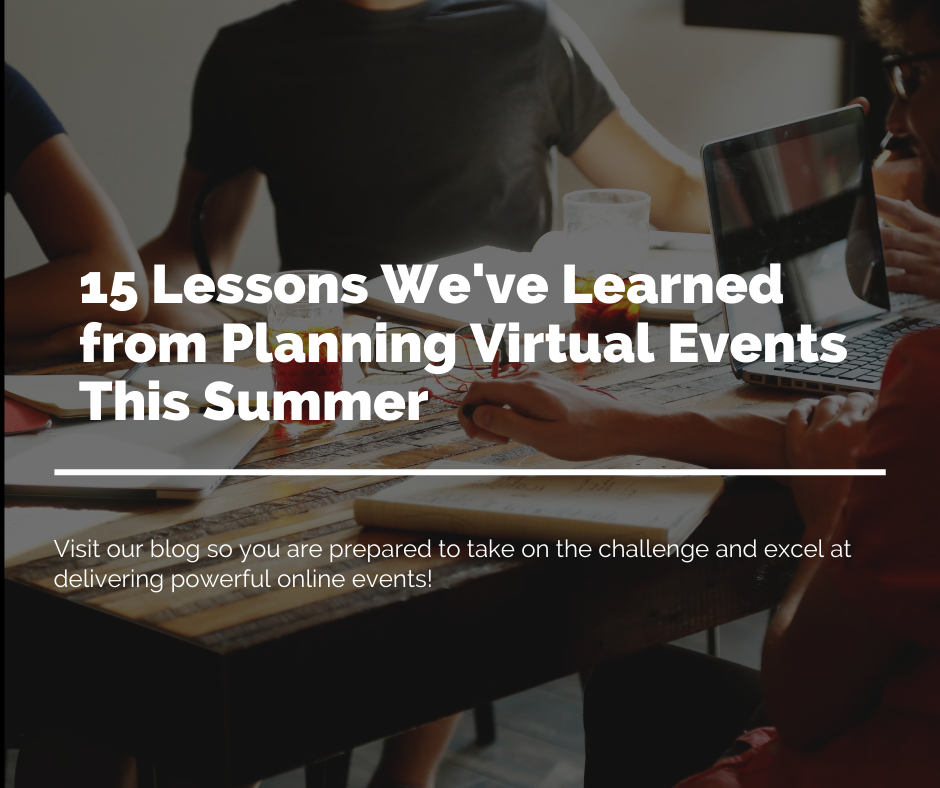After an intense spring and summer spent transitioning in-person events to virtual platforms, the Conference Managers team is sharing their lessons learned so that event organizers are prepared to take on this new challenge and excel at delivering powerful online events.
Without further ado, here are our 15 virtual event best practices:
Overall Logistics
- Prepare for more hand holding—there is a learning curve for all stakeholders which means it will take longer to bring planners, funders and marketers up to speed. In addition, plan to spend additional time and effort educating potential exhibitors and sponsors on what they can expect from investing in your event and how it will work.
- Don’t shrink the planning timeline—it takes four months to create a valuable virtual event when you already have the content.
- Be open to changing the dates and timeline of a previously planned in-person event. Events don’t have to be just three or four days, consider offering content for three or four weeks.
- Develop more budget scenarios than you would for an in-person event. Statistically, attendance registration revenue is between 0 and 70% of in-person event revenue and exhibits/sponsorship revenue is between 25 and 50% of in-person event revenue when there is a strong emphasis on sponsorships, especially content. Finally, technology platforms cost anywhere from $25,000 to $100,000 depending upon live streaming capabilities.
- Assign more people than you think to staff virtual meetings. Attendance registration is up 2 to 10 times the amount of in-person event registrations and your attendees, speakers and exhibitors alike are bound to need support.
Technology
- Limit the time you spend on platform research—demand is outpacing capabilities/performance of the technology; if the event management system you currently use offers a virtual-event solution, go with them.
- Pick a platform that you know can deliver a positive ROI to your exhibitors and sponsors.
- If you want to sell virtual exhibit booths and virtual sponsorship opportunities, select a platform that offers these as part of their virtual conference solutions. Don’t select a platform, like a learning management system, that says they can provide them but really only offers workarounds.
- Conduct training and rehearsals on the apps and platforms so speakers and exhibitors aren’t flying blind.
Event Content and Program
- Break up the content to make it digestible for attendees. With attendees joining conferences from the office or home, there are a lot more distractions and interruptions spreading their attention. Give attendees several breaks and consider making sessions shorter to help attendees balance their environments.
- Invest in video production. This will give your sessions a grander feel.
Marketing and Communication
- Triple the amount of marketing messages. Send attendees know-before-you-go emails with technology details, schedules, networking opportunities as well as daily recaps with highlights and links to recorded videos once the event is underway.
- Communicate what you are offering and why they need to take time to get involved.
- Outline their time commitment up front (Note: During a virtual event, you have one to three minutes to grab attention before attendees start multi-tasking.)
- Reach out to speakers and exhibitors too so they know how things work.
There are many other nuances that make planning a valuable and engaging virtual event different from an in-person event. That’s why we’re here to help. We put our experience planning dozens of events to work for you.
Contact us to learn more!




